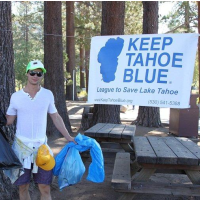Nevada Pressure Leads to Developer Tilt at Lake Tahoe

Nevada has never been truly happy sharing Lake Tahoe with California. Its state legislators―far more friendly to developers and far less cozy with environmentalists―have tried to dissolve the 43-year-old compact that binds them on at least a half dozen occasions since 1975, but failed each time.
But in June 2011, Nevada Governor Brian Sandoval signed legislation, Senate Bill 271, calling for secession from the agency unless the compact is amended to its liking, the compact incorporates those changes into a new regional plan by October 2013 and Congress and California approve the compact changes by 2015.
Two weeks ago, the joint Tahoe Regional Planning Agency (TRPA) overcame many of the longstanding differences that separated the two sides and voted 12-1 to issue a new plan to local governments that allows for increased development in the area, weakens protection for the lake and the basin, and gives localities more say in land-use issues. The only no vote came from the California Assembly Speaker's representative, Mara Bresnick.
Laurel Ames of the Tahoe Area Sierra Club called the Nevada threat to withdraw a “sledgehammer,” and in a joint statement said the resulting changes “mangled current planning protections . . . and abandoned the lake.”
A more measured response from League to Save Lake Tahoe Executive Director Darcie Goodman Collins was still full of apprehension when she told the Los Angeles Times, “The plan does include a lot of positive elements, including community revitalization, redevelopment and bike paths. But these things may come at a price, which is taller and more dense development close to the lake.”
The new plan allows more four-story buildings in town centers and more six-story buildings near the Highway 50 corridor in South Lake Tahoe. It permits greater density and creates a “resort recreation” zone for development―one next to high-rise casinos in Stateline, Nevada, and the other next to the Heavenly Mountain Resort. Development rights can also be transferred from existing environmentally sensitive lots to town centers.
Lake Tahoe is one of the largest and deepest lakes in the country. It also used to be one of the world's clearest. TRPA was created in 1969 to protect the lake area from local governments and developers gone wild, but by the time the two states could enact meaningful controls in the mid-1980s, the lake was losing clarity at one foot per year. That finally stabilized, but the clarity depth of 97 feet in 1967 has been reduced to 69 feet today.
Although Nevada Secretary of State Ross Miller said last week that he would support rescinding Senate Bill 271 if the regional plan update was approved, the threat to pull out of the compact officially still stands.
–Ken Broder
To Learn More:
Passage of Regional Plan "Leap Forward" for Lake Tahoe (by Adam Jensen, Tahoe Daily Tribune)
New Lake Tahoe Plan to Allow Higher Density Development (by Bettina Boxall, Los Angeles Times)
Lake Tahoe Protections Abandoned by Tahoe Regional Planning Agency (Tahoe Area Sierra Club) (pdf)
Lake Tahoe Regional Plan Update Approved (Tahoe Regional Planning Agency) (pdf)
Nevada Gov. Sandoval Signs TRPA Withdrawal Bill (by Matthew Renda, North Lake Tahoe Bonanza)
- Top Stories
- Controversies
- Where is the Money Going?
- California and the Nation
- Appointments and Resignations
- Unusual News
- Latest News
- California Forbids U.S. Immigration Agents from Pretending to be Police
- California Lawmakers Urged to Strip “Self-Dealing” Tax Board of Its Duties
- Big Oil’s Grip on California
- Santa Cruz Police See Homeland Security Betrayal in Use of Gang Roundup as Cover for Immigration Raid
- Oil Companies Face Deadline to Stop Polluting California Groundwater





